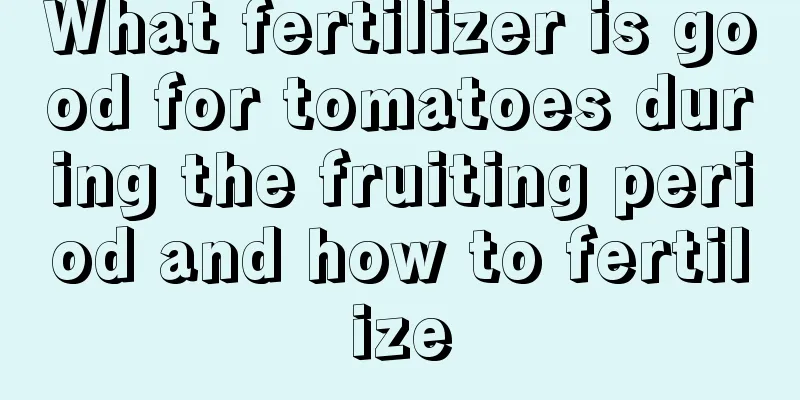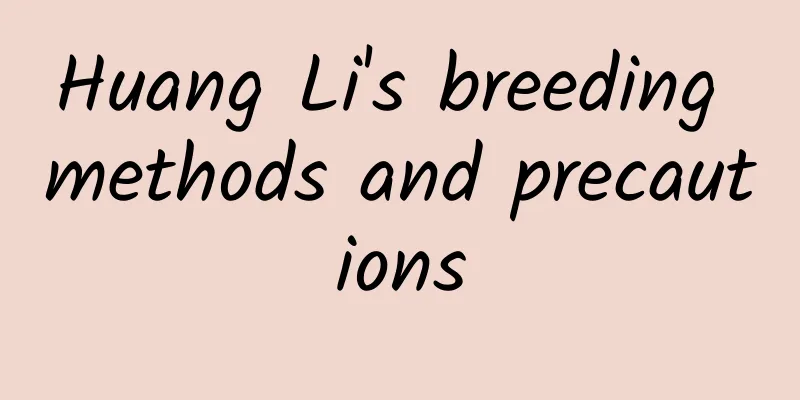What fertilizer is good for tomatoes during the fruiting period and how to fertilize

1. What kind of fertilizer is good to apply during the fruiting periodTomatoes require more potassium fertilizer during the fruiting period, so it is necessary to apply some compound fertilizers high in potassium to replenish the required nutrients in time and achieve better results. Note that it is best to water the plants appropriately after fertilizing. This will dilute the fertilizer, allowing the plants to absorb it faster and avoid fertilizer damage. In addition to applying fertilizer during the fruiting period, you also need to water frequently. The amount of water consumed at this time is also relatively large. Each time you water it thoroughly to replenish the required moisture. 2. How to fertilize1. Apply base fertilizer: For crops that require a lot of fertilizer, you must apply enough base fertilizer when planting. 5000-6000 kg of farmyard manure, 10 kg of urea and ammonium phosphate, and 80 kg of superphosphate should be applied per mu, and all should be applied at one time. 2. Top dressing in stages: Top dressing should be carried out in time during the growth stage. Generally, growth can be resumed one week after the value is set. At this time, farmyard manure should be applied to promote faster growth of seedlings. When the first bunch of fruits begins to swell, apply organic fertilizer, and apply nitrogen fertilizer when harvesting. This will also be beneficial to the growth of the second and third bunches of fruits. 3. Apply foliar fertilizer: During the management period, not only granular fertilizer should be applied, but also foliar fertilizer should be applied in time. It should be sprayed twice during the seedling stage, once in the seedling stage and the other time in the strong seedling stage. Spray once every 7-10 days, for two consecutive times. This can replenish the nutrients consumed by the seedlings in time, which is conducive to flowering and fruiting. |
<<: Main technical points of pomegranate cultivation and management
>>: Peanut cultivation technology
Recommend
How to save the lucky tree when its leaves dry up
1. Spray water mist 1. Reason: The lucky tree lik...
How to grow lucky bamboo in water
1. Temperature No matter what kind of plant it is...
Why do we need to cover corn with plastic film when growing it (covering corn with plastic film can increase the yield of corn)
The benefits and methods of film covering for cor...
Fig Growing Conditions and Regional Temperatures
Fig Introduction Fig is a plant of the genus Ficu...
How long does it take for Tangyin to take effect?
Tangyin service time After the Tangyin succulent ...
How to grow chives
How to grow chives on the balcony Planting season...
What are the matching flowers?
1. Baby's breath Gypsophila is a common match...
Is ginger flower suitable for growing at home?
1. Is it suitable for family raising? Although it...
How to plant ginkgo seeds
Ginkgo Seed Introduction Ginkgo seeds grow inside...
Is garlic planting profitable? The planting cost and profit of one acre of garlic
Is growing garlic profitable? Nowadays, growing g...
What to do if the new leaves of camellia die
1. Cut off the dead leaves After the newly grown ...
How to prune tea tree potted plants
When to prune tea trees It is best to prune the b...
Why do camellia buds dry up but don't fall off?
1. The temperature difference is too large Cause:...
How to shape Vitex in pots
1. Selection of pots before potting If you want t...
Are grapes a fruit or a vegetable?
Are grapes a fruit or a vegetable? Grape is a kin...









